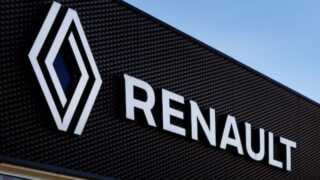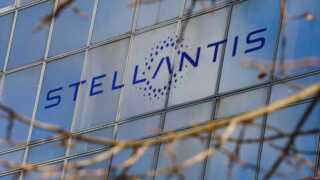Follow us today…
For Rick Kimminau, a lifelong Kansan and Ford F-150 Lightning owner, a reckoning came not at a Supercharger or on the shoulder of I-35, but at home in Wichita, staring down a spreadsheet after a round trip to Kansas City. It wasn’t about proving a point. It was about ripping the Band-Aid off and asking: Am I really saving money with this truck?
He went to a Facebook group to talk about it.
“I frequently drive my 2023 Lightning XLT SR from Wichita, KS, to the Kansas City area (Overland Park, KS) to visit family and friends. After I made the trip this week, I put together this rough comparison of what the trip costs in the Lightning vs. a gas F-150. Hopefully, this helps some of the folks on here who are on the fence about whether to purchase an EV.
On this particular trip, it ended up being a push between the Lightning and a similar ICE F-150. A few things to consider in this comparison:
1. Charging Time – Adding 103 minutes to the trip time seems like quite a bit at first glance. However, on the trip up to KC, I only spent 13 minutes at the charger in Emporia and made it to KC with 30% charge left. I started out charging to 100% at home, and I was getting really good efficiency with a tailwind. I might have been able to make it without stopping to charge, but being a lifelong Kansan, I know the weather can change quickly, so I don’t risk it.
I’m sure a Lightning ER would make the trip there with no charging stops. On the trip home, the charging stop in Emporia took 31 minutes because I left KC at 81%. The other stops while I was in KC included coffee, picking up groceries, and bathroom breaks while I charged.
2. Level 2 Charging – I used all level 3 charging at Tesla Superchargers on this trip. It’s considerably less than the other level 3 options on the route (EVGo, EA, etc.) But, I could have really cut the cost down with a lower cost level 2 charger overnight. (Be careful, most of the time level 2 charging is much cheaper – even free sometimes. But, not always.)
The hotel I stayed at indicated they had EV charging, but it ended up being two Level 2 charges in a public parking garage that were always being used by nearby apartment residents. If you’re planning a longer trip, it’s a good idea to do some research on the charging options where you stay.
3. Home Charging – While I didn’t save any money on this trip and spent extra time charging, most of the time I am driving locally. I charge at home between 8:00 p.m. and 6:00 a.m. when the off-peak electricity rate ranges from $0.03 to $0.06 per kWh. If I use a rough average of $0.05/kWh, the 160 kWh of energy I used on this trip would have cost about $8.00 locally.
For me, the smooth/quiet ride, awesome power, and overall room/comfort offset the extra planning and sometimes extra cost of driving the Lightning on a longer trip. I more than make up for the cost with home charging.”
His total charging cost came to $65.26, just $1.07 more than the estimated $64.19 to fuel a gas-powered F-150 at $3.00/gallon and 20 mpg. But the kicker? That nearly dollar-for-dollar comparison included 103 minutes of total charging time, split across five stops. His honesty struck a chord in the Ford F-150 Lightning Owners Group, where comments came not with pitchforks, but with helpful nuance.
2023 F‑150 Lightning 150 kW DC Fast Charging: 15% – 80% in 41 Minutes
- Charging from 15% to 80% takes about 41 minutes on a 150 kW DC fast charger for extended-range models, offering quick top-ups for daily use.
- The 0-60 mph acceleration is around 4.0 seconds in high-performance variants, providing sports-car-like speed despite its truck build.
- Top speed is electronically limited to 110 mph, balancing safety with the vehicle’s powerful dual-motor setup.
- Standard-range batteries charge fully overnight on a Level 2 home charger, typically in 10-13 hours, making it practical for home-based owners.
The numbers were as clean as the Kansas sky. Kimminau used 160 kWh of energy, averaging 1.9 miles per kWh, exactly as his trip computer displayed. Charging exclusively at Tesla Superchargers (a good move, considering their expanding access to non-Teslas and favorable rates), he recorded per-kWh costs ranging from $0.31 to $0.48. Tesla’s network isn’t just fast, it’s financially competitive.
Advertising
Still, as Kimminau noted, “I could have really cut the cost down with a lower cost level 2 charger overnight,” though hotel-based options proved scarce and frequently occupied.
103 Minutes Charging Time Across Five Stops for 400‑Mile Lightning Trip
As one group member, Rick Dykstra, pointed out, “You can decrease your charge time by charging 20-50% or 10-40% when possible. Faster charging range at the bottom half.” He’s not wrong. Most EVs, Lightning included, charge fastest between 10–80% state of charge.
But strategy collides with geography. Rick responded:
“I get a little nervous trying to push it in that stretch from Emporia to KC. Zero fast-charging options along that stretch.”
And while 103 minutes may sound like an eternity in a world of five-minute fill-ups, Rick’s stops weren’t dead time.
He grabbed coffee, groceries, and stretched his legs, turning necessity into utility.
“The other stops while I was in KC included coffee, picking up groceries, and bathroom breaks while I charged.”
It’s a quiet rebuke to those who frame every charging pause as a purgatory.
Why Ford Built the F‑150 Lightning: Electrifying America’s Best‑Selling Truck Lineup
- Ford developed it to electrify America’s best-selling truck lineup, transitioning traditional buyers to EVs while maintaining work-ready capabilities.
- It was created to meet growing demand for sustainable vehicles, reducing emissions in the pickup segment without sacrificing utility.
- The model aims to compete in the expanding EV truck market, leveraging Ford’s heritage to innovate with features like vehicle-to-home power backup.
- Ultimately, Ford built it to future-proof the F-150 brand, appealing to eco-conscious fleets and consumers amid global shifts toward electrification.
Yet the real killer app for EVs, especially trucks, is home charging. Rick’s electricity provider offers off-peak rates between $0.03 and $0.06/kWh. Had he charged entirely at home? The trip would’ve cost about eight bucks. It’s a reminder that road trips are the worst-case scenario for EV economics.
Day-to-day driving, however, stacks the math heavily in the EV’s favor. Most Lightning owners do over 80% of their charging at home, where costs plummet and convenience skyrockets.
Kimminau showed us that real-world ownership is measured in both cents and minutes. And when the dust settled, his Lightning had delivered nearly the same cost per mile as gas, but with more comfort, less noise, and a plan for a cheaper tomorrow. If that’s not progress, it’s at least clarity.
Image Sources: Ford Media Center
Noah Washington is an automotive journalist based in Atlanta, Georgia. He enjoys covering the latest news in the automotive industry and conducting reviews on the latest cars. He has been in the automotive industry since 15 years old and has been featured in prominent automotive news sites. You can reach him on X and LinkedIn for tips and to follow his automotive coverage.
Follow us today…
Source: torquenews.com










